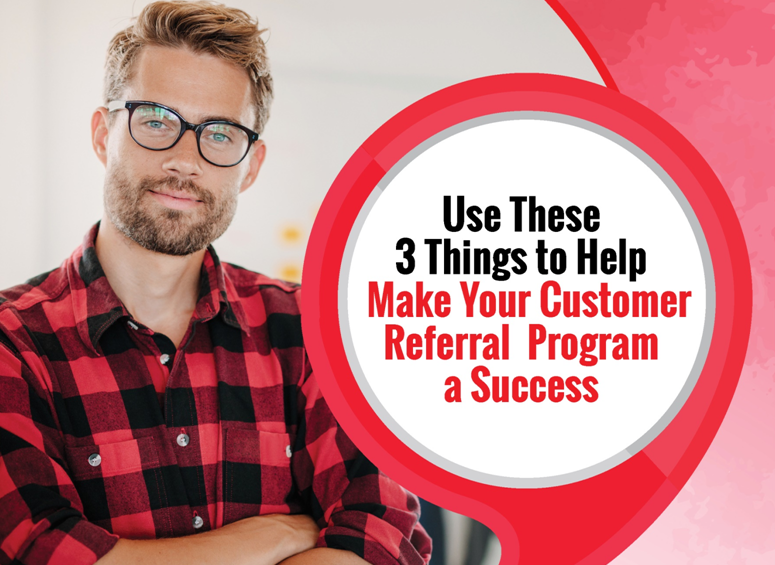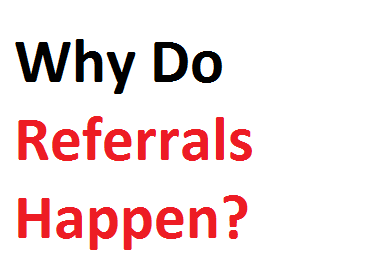
Bring together any group of marketers and ask for their opinion on customer referral programs. There is a great chance that you will hear a universal chorus of approval.
Customer Referral Programs are a win-win for your company. They’re a free way to generate leads. Even if you offer an incentive for referrals, you’ll probably end up paying less for them than you would for advertising.
It is not a coincidence that so many customers offer referral programs…
But what you may not know is that most of them are actually failures.
This should come to no surprise…
Referral programs fail because companies just set them up without thinking about them. They don’t consider the three big questions:
1. What makes customers refer their friends and acquaintances to a company?
2. What are the benefits customers receive from your products?
3. When and how should you promote your referral program?
If you are slamming your head against your desk realizing you have made these mistakes too, don’t worry. We’re here to help you figure out how to make your referral program a big success.


Let’s begin with question number one: What makes a customer want to refer a friend to a particular company?
This is one of the most important questions. If you don’t understand it, you might just end up spinning your wheels with a referral program that appeals to nobody.
According to Jonah Berger, who wrote a book called Contagious: Why Things Catch On, there are six potential factors that might make your customers want to give you a referral:
Social currency comes first. Will a referral make your customer look good on their own or in comparison to other people?
Emotions play a big role in decision making. If your referral program engages customers’ emotions, they’ll be more likely to refer.
Virality is up next. When an idea or concept is easy to remember, it’s also more likely to spread. That’s just as true of referrals as it is of cat videos.
Stories are important to people. If your referral request comes disguised as a story, then it’s more likely that people will want to share it.
Practicality is really at the core of referrals. Is your product practical? Is the incentive to refer it practical too?
Publicity is the final factor. People tend to follow what others do, but only if they can see that they’re doing it.
Here’s the good news… You do not exactly have to have all six factors in order to have a successful referral program. You just need to use the ones that make sense in the best possible way to inspire referrals from your existing customers.
How can you optimize the “why” of your referral program? The key is making it clear that your product aligns with your customers’ core concerns, beliefs, and values.
For example, Apple sells its products by talking about their desire to challenge the status quo. They encourage their customers to think of themselves in a certain way that tells a story and taps into their emotions.
Keep in mind that this aspect isn’t about what you offer in return for a referral – although it’s a good idea if you can connect it to those same values.

Now it is time to talk about the benefits your customers can get if they refer their friends to you.
This question relates most closely to the issues of practicality and social currency. If someone is going to give you a referral, they want to know:
Will it make me look good?
Will it help my friend?
What’s in it for me?
Take a look at this example to help better understand the situation.
Cloud storage company Dropbox increased their sign-up rate by 60% in 2010 by using a simple referral proposition that hit all three of these points perfectly.
The specific offer was that for every friend who signed up for Dropbox, the customer making the referral would receive 500 MB of free storage – and so would their friend. They placed of 16 GB on the referral program.
This offer makes the referrer look good because they’re offering their friend a practical and valuable solution for cloud storage along with a freebie. The benefits to their friends are obvious – and then the person making the referral gets a freebie too.
Think about what you can do to highlight the practical benefits of participating in your referral program. The more obvious they are, the easier it will be for people to make the leap and take part.



The final step involves the knowledge of when and how to promote your referral program. Where do you market it?
The key is making sure that your customers see it (there’s no point in showing it to non-customers) at the time when they are most likely to take action.
A lot of companies make the mistake of putting information about their referral program in the footer of their website or on their home page.
That does not do anything to trigger your customers to take action.
Instead, a better bet is to consider the best way to reach out directly to your customers when they are at their most emotional – and most likely to be enamored of the practicality and value of your products.
In case you were wondering, that’s right after they make a purchase!
The best way to get it to them is to use an email autoresponder. Most customers expect to see a follow-up email after they make an online purchase, and it’s the perfect opportunity for you to outline the benefits of your referral program.
If you want referrals to pour in like rain…
DO NOT just place your referral program in some out of reach spot on your homepage.
Instead, make it clear why people should give you referrals and what they (and their friends) can gain from doing so.
Then, hit them with the information about it at exactly the same time – and sit back and collect the referrals that result.
